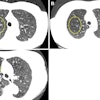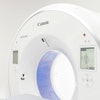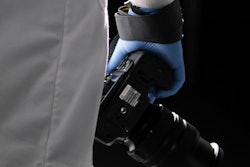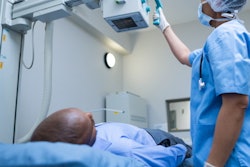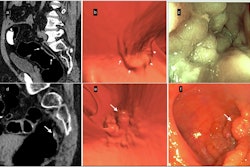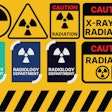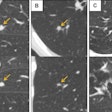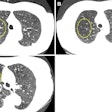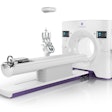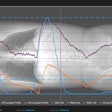Radiologists who are eager to work in Australia may soon find it considerably easier to do so. Despite strong domestic opposition to the proposal of the Australian Health Practitioner Regulation Agency (AHPRA) to fast-track International Medical Graduates (IMGs) for radiologist positions, the agency is forging ahead with its plan.
Earlier this year, Dr. Susan O’Dwyer, chair of the Medical Board of Australia (part of the AHPRA), confirmed that internationally trained obstetricians and gynecologists from similar health systems can access a new fast-track registration pathway to work in Australia. Under the scheme, specialist IMGs (SIMGs) in ob/gyn from the U.K. and Ireland can apply for registration directly to the AHPRA.
General practice, anesthesia, and psychiatry were added to the list, and "general medicine, general pediatrics, and diagnostic radiology are the next priorities for the Expedited Specialist pathway, later in 2025," she noted in the March newsletter.
This announcement received an angry response from many radiologists working in Australia. Around 500 of them signed an open letter, expressing "grave concerns" to O’Dwyer about the proposal.
"The current proposals lack the robust quality assurance processes that are needed to upskill IMGs to safely practise and care for patients in Australia," the authors of the letter stated. They are convinced that the scheme "will lead to poorer care for patients, through increased risk of medical errors and lack of accountability for overseas-located radiologists who do not have RANZCR (Royal Australian and New Zealand College of Radiologists)-recognised credentials."
The signatories argued that the Australian program "is not replicated by overseas training programs, including those from the U.K. Understanding patients from an Australian cultural perspective is critical for providing tailored service for diagnostic imaging."
They also claimed the current proposals lack transparent criteria for assessing international qualifications, clear supervision and monitoring frameworks, integration with existing workforce distribution initiatives, specialty-specific approaches that recognize different practice requirements, and robust evaluation mechanisms to ensure safety and effectiveness.
"There is also the ethical issue of seeking to take overseas doctors away from their country of origin, especially given we already are training many medical students in Australia, who will be looking for training programs (including radiology) to enter. Rather, we should be looking towards encouraging and providing the funding and capacity for Australian-trained doctors who are already in the system to become radiologists," the letter stated.
Medical Board and RANZCR statements
On the AHPRA website, the Medical Board indicates that radiology is one of its key areas for fast-tracking.
"More specialties will be progressively added, prioritised by Australia’s health ministers," it says. "SIMGs on the Expedited Specialist pathway can apply for specialist registration first. The Medical Board will impose conditions on the SIMG’s specialist registration so they can meet the requirements of the specialist registration standard, including six months of supervised practice, an orientation to the Australian healthcare and cultural safety education."
Doctors can start practising when the Medical Board has granted specialist registration and approved the supervised position, it added.
Also, on 1 July 2025, RANZCR announced the introduction of a defined scope of practice pathway for IMGs.
"The pathway operates alongside the existing specialist assessment process. It enables IMGs to be assessed for against a defined scope within clinical radiology, in the areas of: Interventional Radiology (IR), Interventional Neuroradiology (INR) Paediatric Radiology," RANZCR noted.
"Unlike the full specialist pathway, IMGs assessed under this route are not required to demonstrate comparability across the entire scope of an Australian-trained specialist. Instead, they must show they possess the knowledge, skills, experience, and professional attributes necessary to practise safely and competently within a defined, viable scope of radiological practice in Australia," it pointed out, adding that IMGs assessed under the defined scope of practice pathway are not eligible for fellowship of the RANZCR (FRANZCR).
Debate rages on
Alongside these developments, a lively discussion has taken place on Reddit. Debate has focused largely on the differences between the Australian and U.K. training and education systems.
According to a U.K.-trained radiologist who has relocated to Australia and recently obtained a FRANZCR qualification, "The training is structured differently, but RANZCR copied a lot of the training and assessment stuff from the U.K. Royal College of Radiologists ... U.K. trainees do similar subspecialist rotations in years 1-3 and spend years 4-5 on subspecialty training along with general acute work. Most U.K. training programs are based in large tertiary hospitals, which have high volumes of subspecialty exposure."
U.K. graduates do not need a fellowship year "because their subspecialty training is built into their 4th to 5th year, so they finish well trained in their subspecialty," the source noted. "Many will do a post-letters fellowship in a big specialist centre to further refine their skills. In comparison, the Australian fellowship year that I've encountered was a 6-month stint, now split even further into 3-month blocks. Not sure it's equivalent to a full year in a subspecialty, nor what U.K. trainees think of as a fellowship, which is an additional post-letters year."
Australian training is more generalist "because the system here needs more generalists than very subspecialty-oriented radiologists, whereas U.K. reporting is more subspecialty streamed because of the higher volume concentration into tertiary and quaternary centres. FRANZCR is hard, but the part 2 FRCR exams is a robust exam (too)."
The RANZCR training scheme is designed to create general radiologists with a full five years of general training. There is no definition of a subspecialist and no formal recognition of the requirements to be a subspecialist, so some people do 3-6 months and call themselves fellowship-trained subspecialists
Overall, the source does not support the fast-track pathway. "There are enough differences in training that we shouldn't be transplanting U.K. radiologists into rural areas with no upskilling or adequate oversight."
U.K. radiographer Charlotte Slater has also written at length about her experiences of working in Australia. Go to the Society of Radiographers' website.




